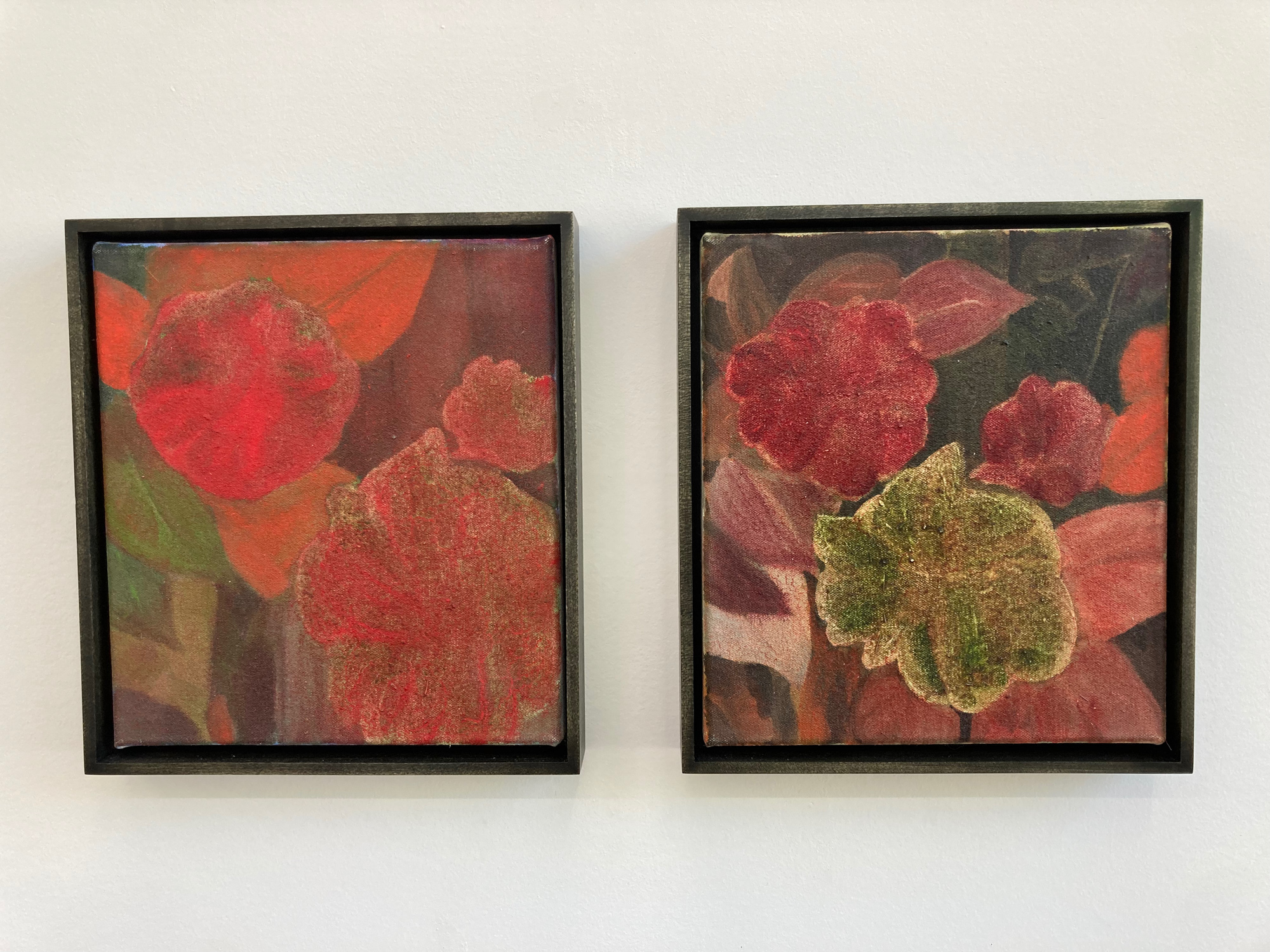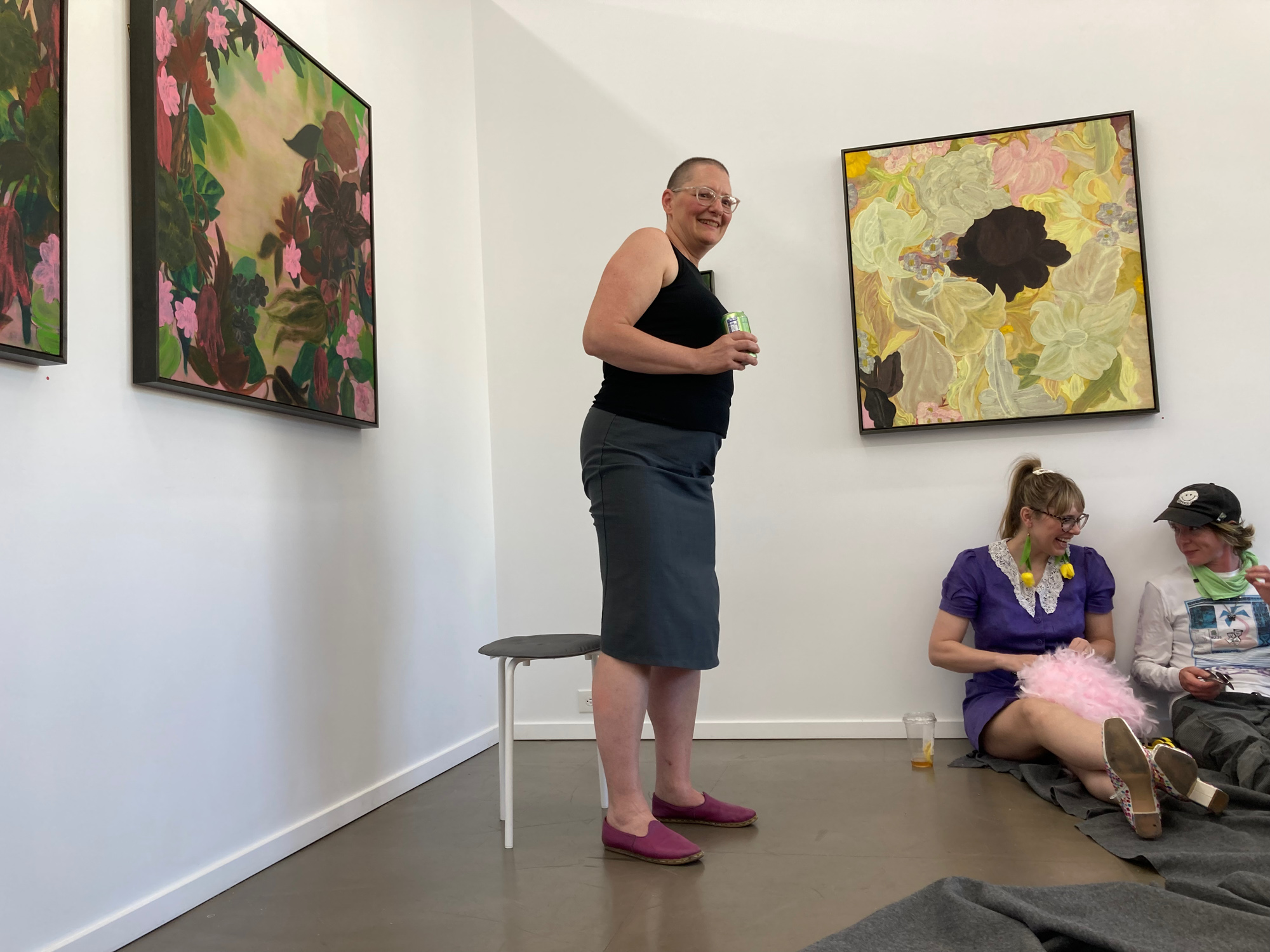Amy bay at nationale

Amy is a friend of me and Martha, and a treasure of Portland’s painting scene. Martha’s been working at Nationale since we moved back, so we were both really stoked when Amy had a solo show there. Martha even had the pleasure of writing her exhibition statement.
The exhibition was a real knockout, especially if you’ve been following Amy’s work for a while. Some of the pieces really felt like they’d been slowly growing for a long time, like the thickets of abundance they depicted. It felt a little like coming back to a familiar patch of forest or a trail after a couple seasons of growth. It’s the place you remember, but you keep noticing evidence of the unseen force that animates it.
Here’s the official documentation from Nationale
Amy also gave a wonderful talk towards the end of the run of the show. She has a way of talking about her practice and the work of painting in general that is really refreshing and comfortable. It feels like she has done the work, loves the work, and has a healthy respect for the difficulty of it. And she’s got the same sort of calm clarity of observation in how she talks about painting that she has in her visual depictions. So it was a good talk overall, but it was extra satisfying to hear her confirm and expand on some of the vibes I picked up. She and May (owner of Nationale) joked about the arc of changes for certain paintings between studio visits, and ended up pointing out some specific formal qualities that were new in this show.
 That was something really satisfying that reminds me what’s valuable about close looking or listening to artists talk about their work or good criticism or even just doing a little more research than swiping through images on Instagram. Like, that new-growth feeling I had was very present but hard to describe – remarkable but ineffable. And I suppose I could have sat down with documentation of Amy’s previous work and done some degree of comparative cataloguing and come up with some formal qualities that describe the differences. But that’s not how we usually engage with paintings, and even when people have paid me to do that in writing it can take an unwieldy amount of time to get anywhere with it.
That was something really satisfying that reminds me what’s valuable about close looking or listening to artists talk about their work or good criticism or even just doing a little more research than swiping through images on Instagram. Like, that new-growth feeling I had was very present but hard to describe – remarkable but ineffable. And I suppose I could have sat down with documentation of Amy’s previous work and done some degree of comparative cataloguing and come up with some formal qualities that describe the differences. But that’s not how we usually engage with paintings, and even when people have paid me to do that in writing it can take an unwieldy amount of time to get anywhere with it.
But when Amy was like “yeah this might be the first painting of mine with a horizon line” or pointed out that there’s a semi-intentional diptych in the show, or talked at length about the mysterious insistence of the dark flower in the center of one of the most striking pieces – those are some of those really rewarding moments of taking art seriously. I don’t need everything noticeable to be explainable, but when you hear someone articulate the thing you noticed, that you keep thinking about but not in words, it’s like this bridge between parts of your brain that I feel like we’re generally discouraged from connecting.
::::
I thought I was going to write about the surfaces of these paintings more, but maybe I’ll do that another time. (Which makes me think of the thesis of Patterns of Intention.) Amy does really cool stuff with cold wax medium, scumbling, and very thin washes of color that makes these rich surfaces that feel organic while remaining very much just paint.
check out the gallery here: They Always Have and Still Do